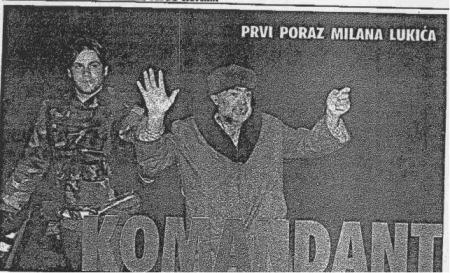

Željko Lelek, born on 9 February 1962 in Goražde.
The Accused has been in custody since 5 May 2006. The indictment was confirmed on 20 November 2006. On 23 May 2008 The Court of Bosnia and Herzegovina (BiH) handed down first-instance verdict in the Željko Lelek case finding the Accused Željko Lelek guilty of criminal offense of Crimes against Humanity and sentenced him to 13 years of imprisonment.



Factual allegations in the indictment:
The Accused is charged with committing, inter alia, murders, torture, and rape in the area of the Višegrad Municipality in the period between April and June 1992, during which time he held the position of a police officer. According to the indictment, the alleged crimes were committed as part of a widespread and systematic attack by the Serb army, police and paramilitary formations aimed against the Bosniak civilian population of the Višegrad Municipality.
According to the indictment, in early May 1992, the Accused, Milan Lukić and Oliver Krsmanović brought five Bosniak men to the bank of the Drina river where they beheaded two men and shoot the other three using riffles.
The indictment further alleges that, together with two other individuals, the Accused drove two Bosniak women to the Mehmed paša Sokolović Bridge in early June 1992. One of the women allegedly carried a baby who was under the age of six months. According to the indictment, Vlatko Pecikoza threw the baby into the air, while the Accused stabbed it as it fell, and then forced the mother to drink its blood. Following this, the Accused allegedly slaughtered both women.
According to the indictment, during the same period, together with Milan Lukić, the Accused raped a female person, who had been stripped naked and tied to the metal bed frame by an unidentified soldier, on orders from Milan Lukić. Lelek and Lukić allegedly abused the woman physically by putting out cigarettes on her body, stabbing her with a knife and cutting her in the genital area, while subjecting her to psychological abuse. The indictment further alleges that the Accused and others raped this person on daily basis over a period of ten days during which she was held captive. During the month of June 1992, the Accused allegedly raped several other women who were held in unlawful captivity.
According to the indictment, in the spring of 1992 at Sase, the Accused, together with four other individuals, forced four Bosniak men to step into the Drina river up to their waists, and then killed them by shooting at them from automatic riffles. The men had allegedly been brought to this location from the Vilina vlas health resort, where they had been held captive.
The indictment also alleges, that the Accused, together with other members of the Serb army and police, participated in the unlawful detention and physical and mental abuse of Bosniak civilians in the Višegrad Police Station in May 1992.
Counts of the indictment:
Željko Lelek is charged with the criminal offence of Crimes against humanity pursuant to Article 172.(1)(h) of the Criminal Code of BiH (CC BiH), in conjunction with the following items:
· Depriving another person of his life (murder)
· Forcible transfer of population
· Imprisonment
· Torture
· Coercing another by force or by threat of immediate attack upon his life or limb, to sexual intercourse or an equivalent sexual act (rape)
· Enforced disappearance of persons
· Other inhumane acts of a similar character intentionally causing great suffering or serious injury to body or to physical or mental health,
all in conjunction with articles 29 (accomplices) and 180 (1) (individual criminal responsibility) of the CC BiH.
Course of the proceedings:
The indictment was confirmed on 20 November 2006. On 5 December 2006 the Accused pleaded not guilty to all counts of the indictment. The trial started on 2 March 2007. On 23 May 2008 The Court of Bosnia and Herzegovina (BiH) handed down first-instance verdict in the Željko Lelek case finding the Accused Željko Lelek guilty of criminal offense of Crimes against Humanity and sentenced him to 13 years of imprisonment.




















